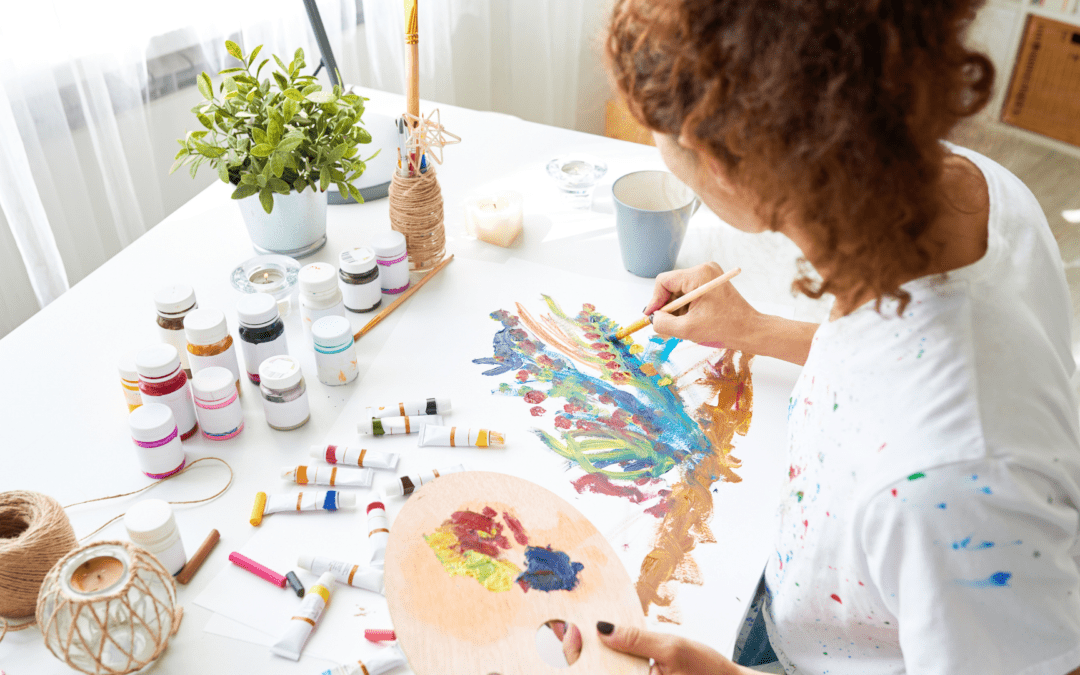Author: Yuval Dinary
Some people’s need to create beauty is as fundamental as their need to eat. It’s an instinctual hunger for creation that carries great mysteries and awe along with it. The link between creativity and madness is one that’s been discussed since the ancients and there are several reasons why people with bipolar disorder may be more creatively inclined.
Art can tell us what words cannot. As social animals, we have a need to communicate our experiences for the purposes of sharing and feedback. We also communicate so that we can dissect and integrate complex experiences for ourselves. Working on a piece of art is to allow our subconscious to talk with itself in order to heal and understand. People with bipolar disorder are always in need of such healing after episodes (which may not always make conscious sense once they are over). It is therefore no surprise that they would gravitate towards the arts.
My outlet is classical composition. When I was 12, my music teacher showed me how to write down a melody I came up with and I never stopped writing. Since then I’ve composed several albums, had the honor of having musicians play my pieces across the world, and recently released a symphony dedicated to my former mentor. My creative process changed a lot between episodes and evolved alongside my recovery journey. I would like to share what I learned.
Firstly, I must note that as important as it is to reduce symptoms, we can never be free from mania and depression – we can only learn to be free from their disorder and utilize their energies. The best outcomes I’ve found were the result of knowing where to place mania and depression within my long-term creative process. Here is what I have found from my own experiences:
When Manic:
This is a good time to generate ideas, album concepts, and entire pieces if inspired to. However, I do not edit much, finish, or publish anything while in this state. This is the “big ideas” time that will require the detail oriented version of myself to revise later – but not right now.
This is the time to experiment. I am more open to taking risks and thinking outside the box – try something new. I try to have fun and see where the experiments take me but using the equipment I already have and do not buy anything for these experiments.
When Depressed:
When you’re manic you create the shapes, when you’re depressed you color them in. When I’m depressed, I am more detail oriented because my mind isn’t racing in a hundred directions simultaneously. I am often not as energized and so you can commit to just one single task with more ease. This is the time for editing the pieces You’ve made while manic. Make them come to life by filling in the aspects that were rightfully overlooked during mania.
I’m more likely to be critical of pieces while in this state, which can be beneficial as critiques could be constructive. This isn’t something that your manic self is likely to do well. You are now acting as the counterbalance of the piece’s creator.
I do not release anything in this state either, as depression could have an overlaying effect on your piece which may not reflect the essence of what it is you’re trying to represent. If you have no more work to edit, create something that’s within the boundaries of what you’ve previously created. For example, when I got depressed after composing a minuet, I just kept writing more minuets until I was inspired to do something else.
When Centered:
When you’re neither manic nor depressed is when you can consider publishing your piece. You may have better judgement on your work, its titles and attributions, and where it should be released.
Since my artistic medium requires equipment, I only consider buying it when in this state. Reckless manic buying for the arts is something that I and many others have been guilty of. Learn from my mistakes – do it with a level head.
This is also the best time to learn. As much as we can learn from our own experiments, knowledge that comes from lineages of artists is priceless and can deepen our understanding of the field so that future experiments can be done on a more solid base.
I recognize that these findings don’t apply to all of the arts, but I hope that my experiences can be useful in the conversation and application of harnessing the very energies that we may have feared when first diagnosed.
 Yuval Dinary
Yuval Dinary
I’m a registered social worker and a mental health / addictions counselor from Toronto (Canada) who specializes in the Bipolar Condition. I’ve recovered from addiction and the Bipolar Disorder that I’ve wrestled with since adolescence and now help people thrive. Before that I was working in the public sector, counseling those who lost their mental health services due to the COVID-19 lockdown restrictions, those facing extreme loneliness, and chaired 12-Step meetings for people in the Dual Recovery journey.
I focus on the underlying principles and beliefs that aid recovery. I believe that psychology without philosophy is like a car without gas. I help people integrate their disorder and journey within a larger system of beliefs that then makes their recovery far more effective. If you’re interested in such topics or are looking for a bipolar counselor, visit my website at: www.bipolartreatment.ca .


